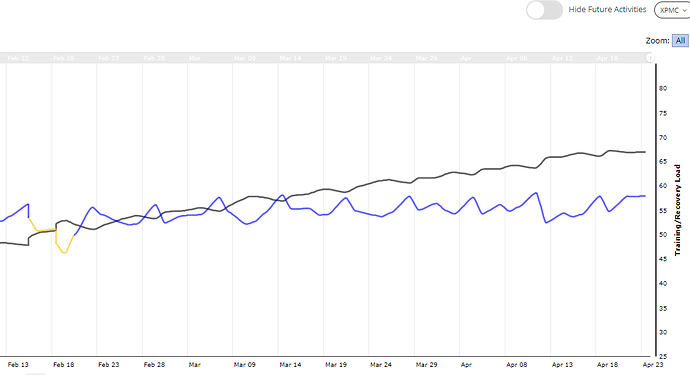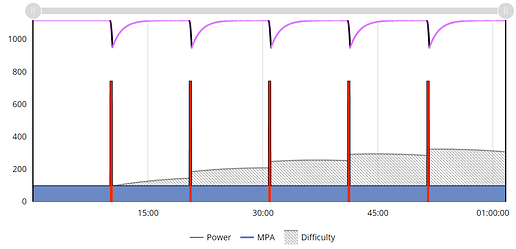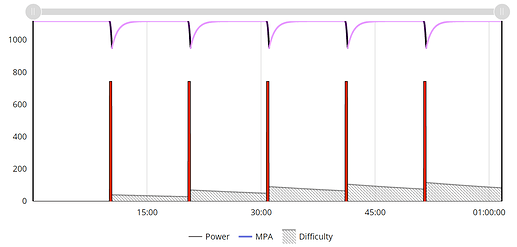Sorry in advance, long winded post and not certain it’s fully fleshed out (I haven’t had my coffee yet today  )… but think it’ll be interesting for folks that are keen to dig in and learn more
)… but think it’ll be interesting for folks that are keen to dig in and learn more 
Creating good workouts that aren’t excessively difficult is hard. I suspect this is why so many people have referred to coaching as an “art” over the years. However, with Xert you have a solid indicator of how difficult a workout will be without ever having to ride it yourself (via difficulty score). It just takes more than looking at TiZ or some weighted averaged power to know that 
Think of it this way… the focus is how we approximate the total accumulation of strain placed on all your systems. If you’re doing intervals at 300 W and recovering at 100 W, then the overall strain of that activity would likely be somewhere between the two. So you’re correct, if you include the strain from warmup, recovery, and cool down, then your intervals will probably be slightly above the recommended focus (if you’re just doing plain intervals like 5x4 @ 8min power to accomplish an 8:00 focus for example).
Not necessarily… I’ll expand on this below:
Without directly knowing it, you’re asking about Specificity. The more strain (XSS) you accumulate at the focus power, the higher the specificity. Xert doesn’t really recommend workouts by their amount of high/peak strain in particular, since you can’t train those aspects of your fitness alone - you’re always training a combination of low, high, & peak systems. Rather, Xert looks at the total XSS accumulated for a workout/activity and uses specificity to indicate how much of the that workout strain (XSS) is accumulated near the focus power.
As an example, if you were to do 5x20s all-out sprints (at your 30s mmp) separated by 10 min ez noodling (~100 W) between, what would be the overall impact of that activity on your fitness signature? Well, the focus would have to be somewhere near your 30s MMP (e.g. 00:30 focus), but also including the work done riding at 100 W (we’ll just call that 3:00:00+ focus), thus resulting in a low specificity (we use the term polar specificity). For workouts like this, you would see them rated as polar road sprinter:
Now if we were to completely remove the pedaling between sets, then the only work performed would be at/near your 30s MMP, so the focus would be 00:30 and the specificitiy would be very, very high (we use the term pure specificity). A workout like this would be rated as pure Power Sprinter - the focus would be slightly lower, because there is no additional low XSS (dragging the focus to a longer duration:
Both those workouts contain the same amount of high/peak XSS, but the total XSS amount is different between them (which could be inferred from the difference in specificity rating). It wouldn’t make any sense to recommend the second workout based purely on High/Peak XSS, since the first workout would have the same amount of high/peak XSS but a greater total amount of XSS, so you would be accomplishing more training in the same amount of time.
Ideally, the specificity rating of your workouts should increase as you draw near to an event, meaning that your training very closely mimics the demands of your event. However, specificity isn’t directly accounted for by the XATA at this time. Choosing a ‘pure’ specificity workout over a ‘mixed’ specificity workout likely won’t make a material difference to your training in the peak/taper phases.





